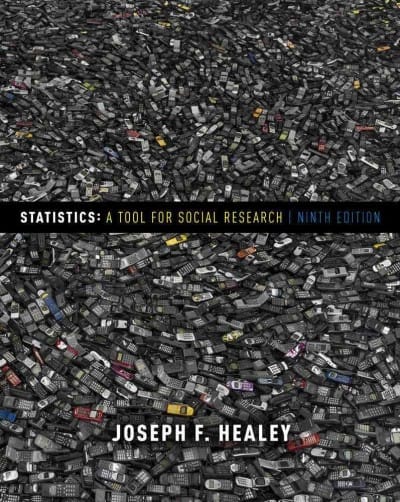This exercise is tedious but, if you want a more concrete and tangible understanding of sampling distributions
Question:
This exercise is tedious but, if you want a more concrete and tangible understanding of sampling distributions and the two theorems presented in this chapter, then it may have a significant payoff. At the end of this problem are listed the ages of a population of college students (N 50). By a random method
(such as a table of random numbers), draw at least 50 samples of size 2 (that is, 50 pairs of cases), compute a mean for each sample, and plot the means on a frequency polygon. (Incidentally, this exercise will work better if you draw 100 or 200 samples and/or use larger samples than N 2.)
a. The curve you’ve just produced is a sampling distribution. Observe its shape; after 50 samples, it should be approaching normality. What is your estimate of the population mean (m) based on the shape of the curve?
b. Calculate the mean of the sampling distribution
(m ). Be careful to do this by summing the sample means (not the scores) and dividing by the number of samples you’ve drawn. Now compute the population mean (m). These two means should be very close in value because m m by the Central Limit Theorem.
c. Calculate the standard deviation of the sampling distribution (use the means as scores) and the standard deviation of the population.
Compare these two values. You should find that s s/ .
d. If none of the preceding exercises turned out as they should have, it is for one or more of the following reasons:
1. You didn’t take enough samples. You may need as many as 100 or 200 (or more) samples to see the curve begin to look “normal.”
2. Sample size (2) is too small. An N of 5 or 10 would work much better.
X 1N X
Step by Step Answer:







